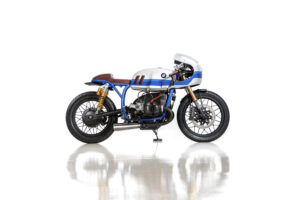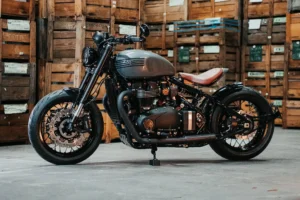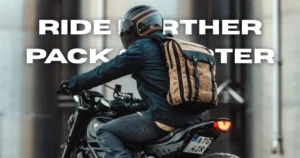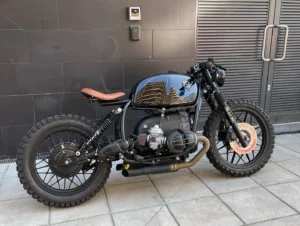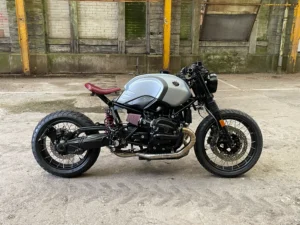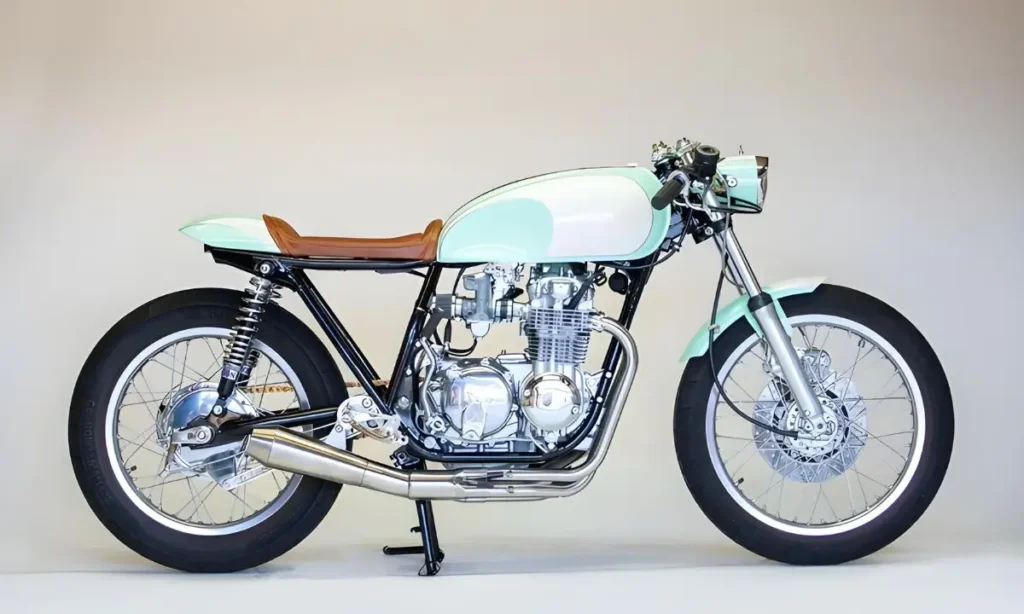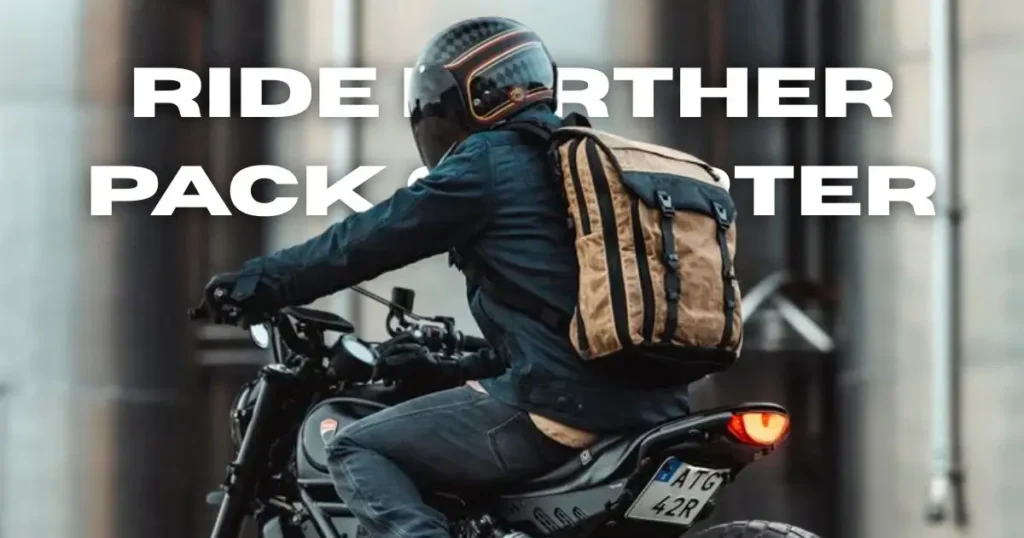Table of Contents
ToggleThe BMW R50 café racer is a timeless classic in the custom motorcycle world. Known for its clean lines, boxer engine, and strong build, it offers the perfect base for both restoration and customization. Many riders choose the R50 for its vintage look and reliable engineering.
This guide explains everything you need to know—from its history and core features to common modifications and famous builds. Whether you’re starting your first project or improving an old one, this article will help you understand what makes the BMW R50 a top choice for café racer enthusiasts.
A Brief History of the BMW R50
The BMW R50 was first introduced in 1955 as part of BMW’s post-war motorcycle lineup. It remained in production until 1969. Built in Germany, the R50 was known for its solid engineering, smooth performance, and simple design. It became popular among riders who wanted a reliable motorcycle with long-distance capability and minimal maintenance needs.
Over time, the R50 gained respect in the vintage motorcycle scene. Today, it is often used as the foundation for custom café racer builds due to its mechanical strength and timeless frame design.
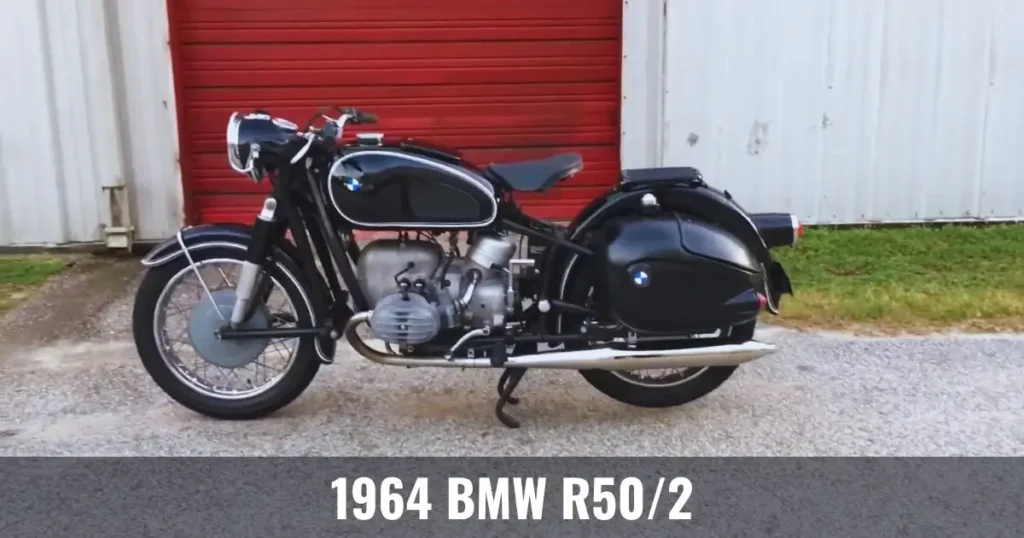
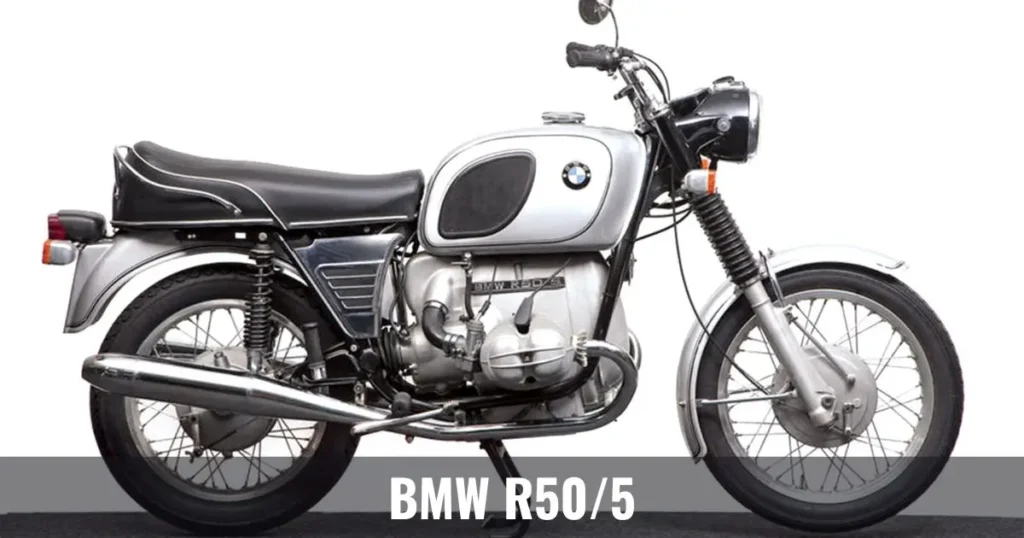
The R50 was part of the BMW “slash” series, including models like the R50/2 and R50/5. These bikes used a horizontally opposed twin engine, also called a “boxer” engine, which gave them a low center of gravity. That made them easier to handle on the road.
The frame was strong, made from tubular steel, and designed to support long rides and sidecars. Its design stayed consistent during production, making it easier for restorers and custom builders to find compatible parts.
Key Specifications of the Original BMW R50
| Feature | Specification |
| Engine Type | 494cc air-cooled boxer twin |
| Power Output | 26 hp at 5,800 rpm |
| Top Speed | Around 87 mph (140 km/h) |
| Transmission | 4-speed manual |
| Drive Type | Shaft drive |
| Front Suspension | Earles fork |
| Rear Suspension | Plunger or twin shocks (later) |
| Brakes | Drum brakes (front and rear) |
| Fuel Capacity | Approximately 17 liters |
| Dry Weight | About 175 kg |
These features gave the R50 a balance of performance and comfort, which made it a trusted motorcycle for both regular riding and touring. Riders today still value these qualities, especially when building a café racer that keeps the vintage feel while adding modern upgrades.
What Makes the BMW R50 Ideal for Café Racer Conversion?
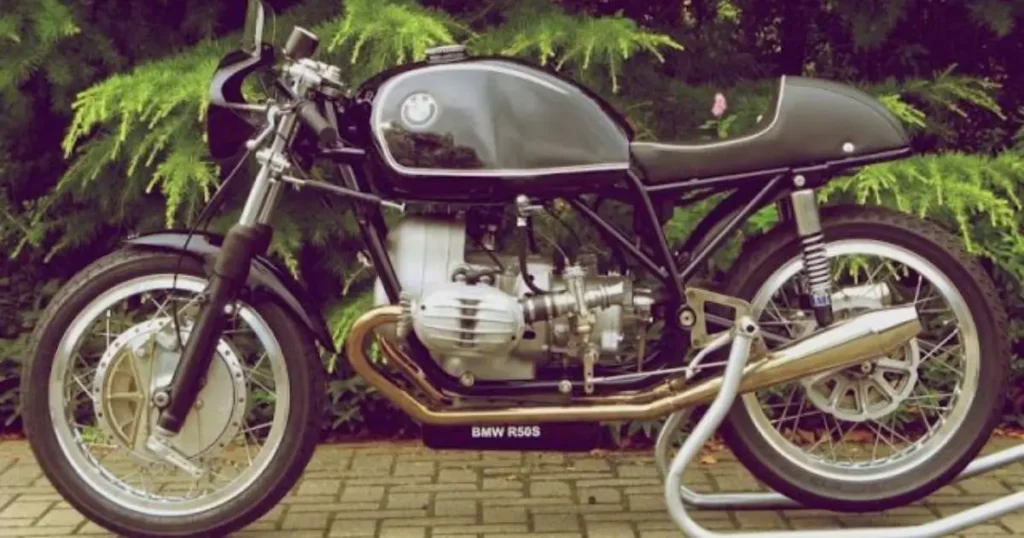
The BMW R50 is a preferred choice for café racer projects because of its classic design and reliable foundation. Its steel frame is strong and simple, allowing easy modifications without structural issues. The frame also supports various seat and tank styles, which helps builders create a balanced and clean look.
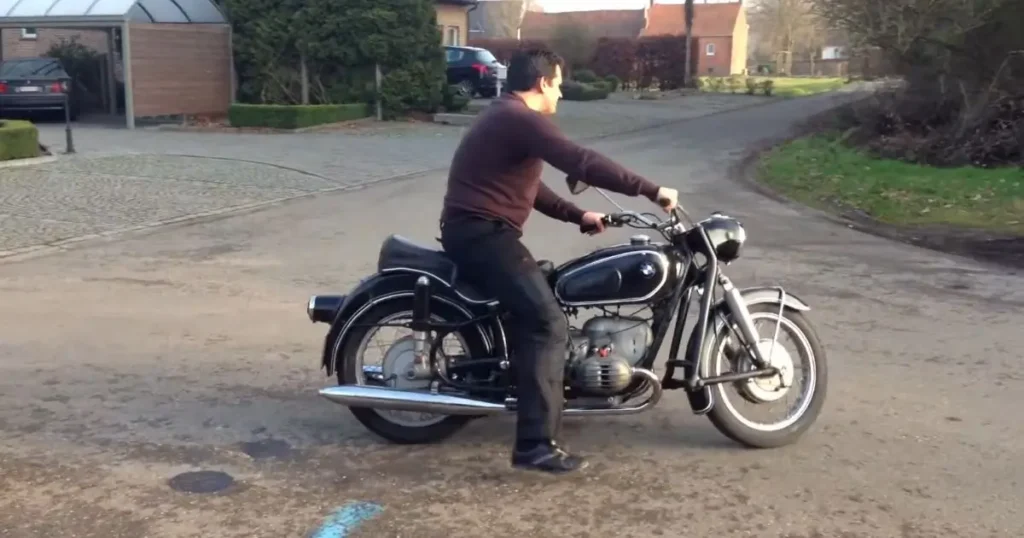
The bike’s boxer twin engine offers smooth power delivery and a unique appearance. Its horizontal layout lowers the center of gravity. This improves handling and gives the motorcycle a stable ride. The engine also stays visible, which suits the open and minimal style of a café racer.
The R50 includes a shaft drive system. It requires less maintenance compared to chain drives. That makes the build more durable for everyday use.
Lastly, the availability of aftermarket parts and guides makes the R50 easier to restore or customize. This support allows builders to complete projects with fewer complications.
What Should You Consider Before Building a BMW R50 Café Racer?
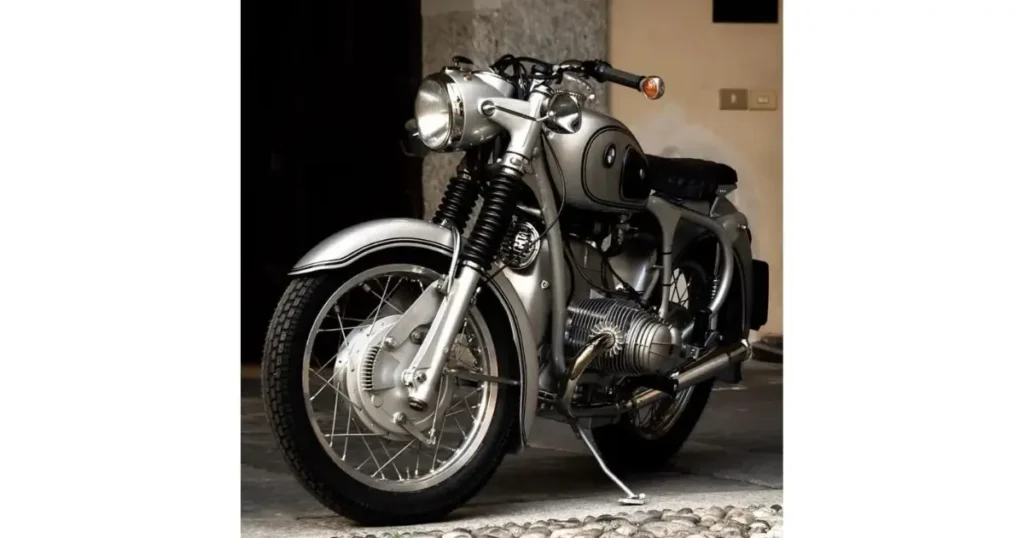
A. Define Your Goal
Before starting a café racer build, define your goal clearly. Decide if the motorcycle will be a daily rider or a showpiece. A daily rider needs practical choices like strong tires, reliable brakes, and a smooth seat. A show bike allows more freedom in design, paint, and custom parts. Each choice affects cost, time, and materials.
Also choose your design style. Some builders prefer a modern café look. Others want to keep a vintage appearance. Decide if you want a period-correct look or a custom finish. Make sure your plan fits your skill level and available tools.
B. Budget Considerations
Building a BMW R50 café racer needs careful budgeting. The cost depends on the condition of the base bike. A non-running R50 may cost less to buy but more to restore. A well-maintained model can be expensive but saves time.
Include parts, labor, tools, and paint in your budget. Most builds range from £4,000 to £12,000. Always leave extra money for unexpected repairs.
How Do You Find the Right BMW R50 for Your Café Racer Project?
Finding the right BMW R50 is the first important step in your café racer project. Start by searching trusted sources like vintage motorcycle dealers, online marketplaces, classic auctions, and community forums. Always check if the seller provides full details and clear photos.
Inspect the motorcycle carefully before buying. Focus on the frame condition. Look for cracks, rust, or bends. The frame must be straight and solid. Check the engine for signs of oil leaks or missing parts. A running engine saves time, but even a non-running one can be useful if the price is right.
Verify all original documents, including the frame and engine numbers. Matching numbers increase the bike’s value and make registration easier. If the bike is imported, make sure the papers meet local legal rules.
Avoid bikes with unclear history or heavy damage unless you have expert repair skills. A good base bike makes the build smoother and more cost-effective.
What Are the Key Modifications Needed for a BMW R50 Café Racer?
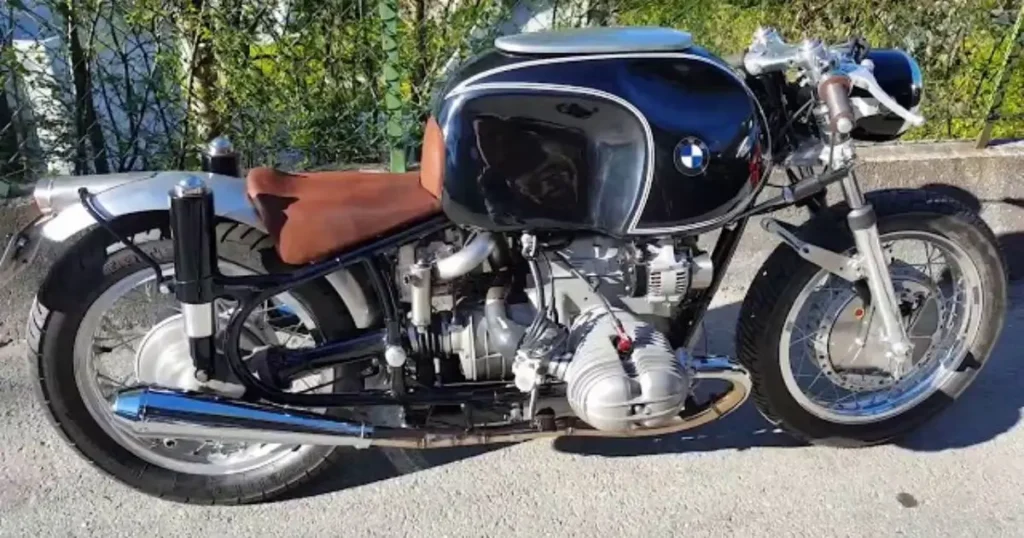
A. Frame and Subframe
Start by modifying the rear section of the frame. Most builders install a custom rear loop to support a café racer seat. Cut and weld this part with accuracy to keep the frame strong. Use a flat or slightly curved loop that follows the seat line. Remove unused tabs or brackets for a clean look.
B. Suspension Upgrades
Upgrade the front forks if the original ones are worn or soft. You can replace them with stronger forks from later BMW models. At the rear, use twin shocks with better damping. Choose adjustable models if available. This improves comfort and handling.
C. Engine and Exhaust
Rebuild the engine if it shows signs of wear. Clean the internal parts, replace seals, and check compression. Install a café-style exhaust for both sound and design. Use a 2-into-1 system or short dual pipes to match the frame and engine.
D. Fuel Tank and Seat
Keep the original tank or replace it with a slim café racer tank. Secure it properly to the frame. For the seat, use a one-piece unit with a bump stop. Match the seat length with the new rear loop. Ensure rider comfort and correct seating position.
E. Handlebars and Controls
Switch to clip-ons or low-rise bars. This gives the bike a sportier posture. Replace old grips, levers, and switches with compact models. Route the cables cleanly. Keep control layout simple and reachable.
F. Wheels, Tires, and Brakes
Use classic spoke wheels. If the rims are damaged, replace them or rebuild using new spokes. Fit tires with vintage tread design. Upgrade drum brakes for better stopping power. Adjust brake shoes and cables for safety.
G. Electrical System and Lighting
Inspect the full wiring system. Replace it if wires are brittle or damaged. Convert to 12V for better lighting and charging. Install a small LED headlight, compact turn signals, and a minimal tail light. Use a clean layout and hide wires where possible.
How Can You Keep the Vintage Look While Customizing a BMW R50 Café Racer?
Focus on the design details that respect the original BMW R50 style. Use a paint scheme that fits the classic café racer look. Common choices include gloss black, silver, or white. Thin pinstripes in white or gold also reflect the original BMW design. Apply the paint evenly for a smooth finish.

Use original BMW emblems if available. Place them on the fuel tank or side covers. These small details help keep the bike’s identity clear. Replace any damaged badges with quality reproductions if originals are missing.
Select vintage-style gauges with clear faces. Use round speedometers and tachometers in metal housings. Mount them near the handlebar for good visibility. Add chrome or brushed aluminum bezels for a clean result.
Keep mirrors, indicators, and switches minimal but functional. Choose round or bar-end mirrors that match the bike’s style. Every part should serve a purpose while keeping the motorcycle true to its vintage form.
What Legal and Safety Rules Should You Follow When Building a BMW R50 Café Racer?
Before riding your custom BMW R50 café racer on public roads, check all legal requirements. Each country has its own rules. In the UK, your bike must pass the MOT test if it is over three years old. In other regions, a safety inspection may be required.
Make sure the motorcycle has a visible registration number and working lights. The headlight, brake light, and turn signals must meet road standards. Use reflectors on the rear and sides if the law requires them.
Your exhaust system must follow noise regulations. It should not be louder than allowed in your area. Fit a silencer if needed. Also, install a working horn and a speedometer.
If you change the frame or engine, update the registration documents. Use the correct VIN and engine numbers. Keep all paperwork safe. Following these steps keeps the bike legal and safe for regular use.
Inspiring BMW R50 Café Racer Builds
Exploring notable BMW R50 café racer builds offers valuable insights into the customization potential of this classic motorcycle. Below are examples of distinguished builds that highlight various approaches to transforming the BMW R50 into a café racer.
1. Maurizio Merlo – “The Lady” (1971 BMW R50/5)
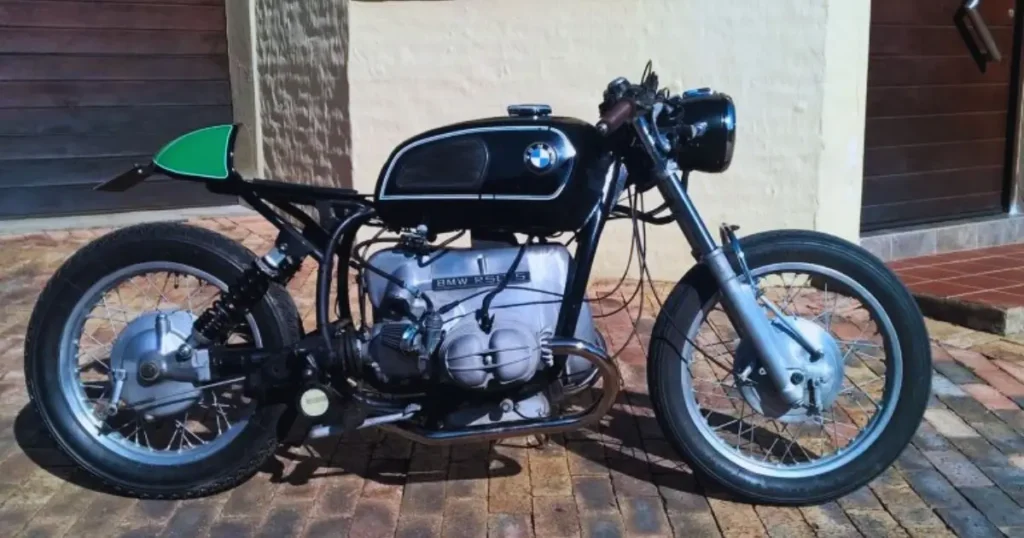
Maurizio Merlo, an Italian builder based in Johannesburg, created “The Lady,” a 1971 BMW R50/5 café racer. Embracing a minimalist philosophy, he removed unnecessary components to achieve a clean aesthetic. Modifications include a new subframe with updated shocks, a 2-into-1 open exhaust system, and clip-on handlebars. The battery was relocated to the filter case to maintain a tidy rear section. Notably, the original tank and headlight were preserved, honoring the bike’s history.
2. Donovan Muller – Cytech’s 1971 BMW R50/5
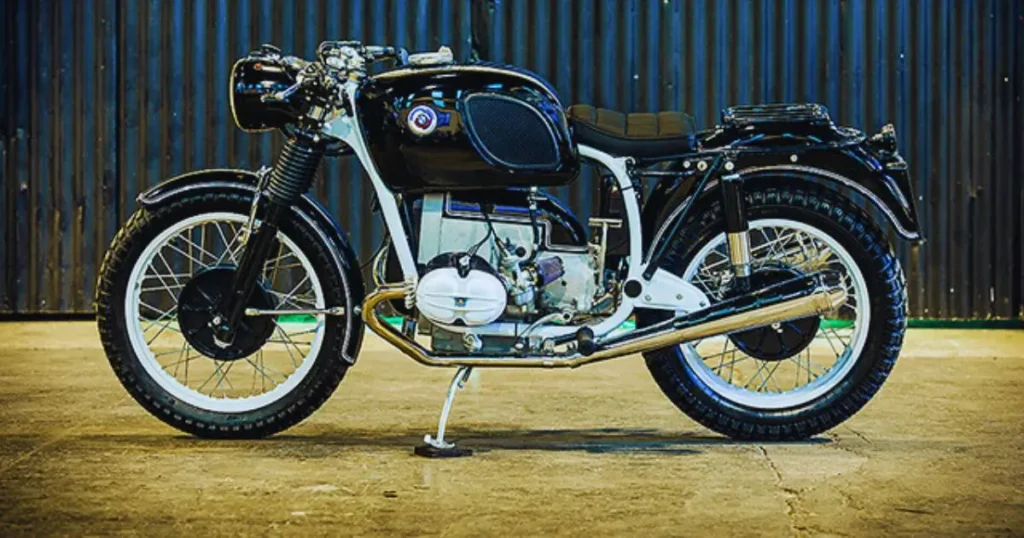
Donovan Muller of Cytech transformed a 1971 BMW R50/5 into a monochromatic café racer. The build features a powder-coated white frame, upgraded suspension with progressive springs, and a modified engine with 600cc pistons and R60/5 cylinder heads. A custom exhaust system with 38mm headers and Dunstall silencers complements the bike’s refined appearance.
3. Peter Thommen – “BMW 60+” (1960 BMW R50/69S)
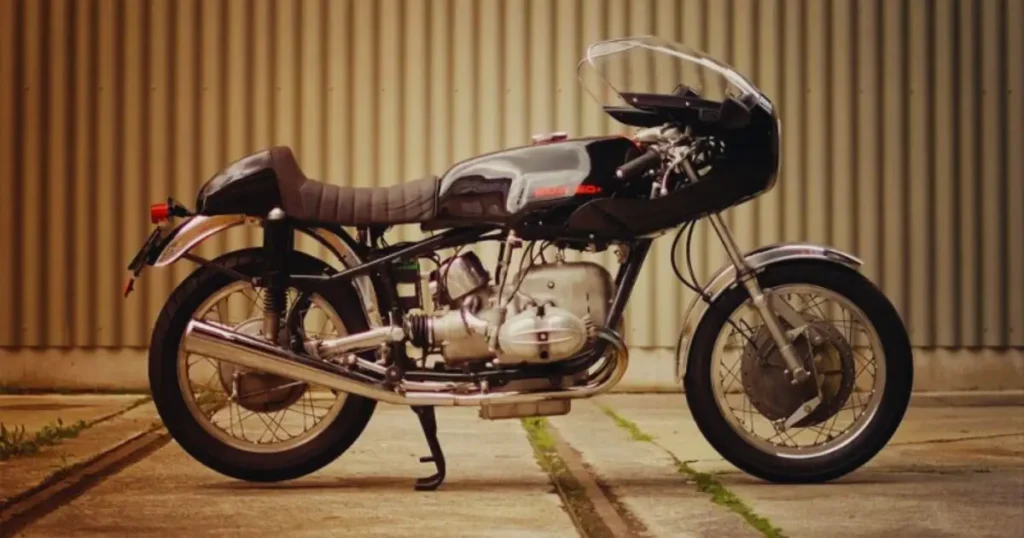
Swiss enthusiast Peter Thommen has owned and customized his 1960 BMW R50/69S for over six decades. Throughout the years, he has implemented numerous modifications, including racing valve springs, a Ceriani front fork, a Fontana double duplex front brake, and a Moto Guzzi S7 fuel tank. This long-term, evolving project showcases a deep personal connection and commitment to the café racer ethos.
4. Bret Crandell – Obsessive Compulsive Design’s 1966 BMW R50/2

Bret Crandell of Obsessive Compulsive Design revitalized a 1966 BMW R50/2, drawing inspiration from a 1977 Florida State Inspection sticker found on the bike. His build pays homage to the motorcycle’s history while incorporating modern, racier elements. The project reflects a balance between preserving the bike’s legacy and introducing contemporary design cues.
These exemplary builds highlight the versatility and enduring appeal of the BMW R50 platform in the café racer community. Each project reflects the builder’s unique vision and dedication to blending classic design with modern performance enhancements.
What Should First-Time Builders Know Before Starting a BMW R50 Café Racer?
Start with clear planning. Before removing any part, create a checklist. Note your goals, required tools, and available space. Work step by step. Avoid rushing, even on small tasks. Each detail affects safety and design.
Choose a complete donor bike if possible. Missing parts increase cost and time. A running engine saves effort and reduces mechanical issues. Test the electrical system before stripping the frame. It helps avoid confusion later.
Use quality tools. Cheap tools break easily and slow progress. Keep your workspace clean. Store removed parts in labeled boxes or bags. Take photos during disassembly. These images help with reassembly and wiring.
Join forums or online groups for BMW R-series builders. Ask questions and share progress. Learn from others’ mistakes and solutions. Use service manuals as reference. They contain accurate measurements, diagrams, and torque settings.
Set realistic deadlines. Custom builds take time. Focus on progress, not perfection. Every step improves your skill.
Conclusion
The BMW R50 café racer is a strong choice for anyone serious about classic custom builds. Its solid frame, reliable engine, and timeless design make it ideal for personal expression and practical riding. With proper planning, careful modifications, and attention to legal details, the R50 can become both a unique machine and a daily performer. From sourcing the right bike to finishing the last bolt, each step adds skill and value. Whether you are restoring or customizing, the R50 offers real potential. Use this guide to build with confidence, respect its history, and create a café racer that stands out with purpose.
Disclaimer:
This article is intended for informational and educational purposes only. Some of the images and information featured in this post have been collected from publicly available and reputable sources. All credit goes to the original owners, photographers, or authors. If you own any content featured here and would like it to be removed or credited properly, please contact us directly. We do not claim any ownership of third-party materials.
FAQs
What is the difference between the BMW R50 and R50/5 models?
The BMW R50 was produced from 1955 to 1960, featuring a 494cc engine and Earles fork front suspension. In contrast, the R50/5, introduced in 1969, came with a 499cc engine and telescopic front forks, offering improved handling and performance. The R50/5 also had a more modern electrical system and updated styling.
Can I upgrade the R50 engine for better performance?
Yes, upgrading the R50 engine is possible. Common modifications include installing larger pistons, such as 600cc from the R60/5, and upgrading carburetors for improved airflow. However, these modifications require precise tuning and may affect the bike’s originality.
Are there bolt-on café racer kits available for the BMW R50?
While specific bolt-on kits for the R50 are limited, some components like subframes and seats designed for the R-series can be adapted with minor modifications. It’s essential to ensure compatibility and consult with experienced builders when selecting parts.
What are the legal requirements for registering a custom BMW R50 café racer?
How do I maintain the shaft drive system on the BMW R50?
Regular maintenance of the shaft drive includes checking and replacing the gear oil, inspecting the drive shaft for wear, and ensuring the final drive seals are intact. Proper maintenance ensures smooth power delivery and extends the lifespan of the components.
Can I convert the electrical system from 6V to 12V?
Yes, converting from a 6V to a 12V electrical system is a common upgrade. This involves replacing the generator, voltage regulator, and bulbs. A 12V system provides better lighting and compatibility with modern accessories.
Where can I find original or reproduction parts for the BMW R50?
Original and reproduction parts are available through specialized vintage BMW parts suppliers, online marketplaces, and forums dedicated to classic BMW motorcycles. Networking with other enthusiasts can also lead to valuable resources.


